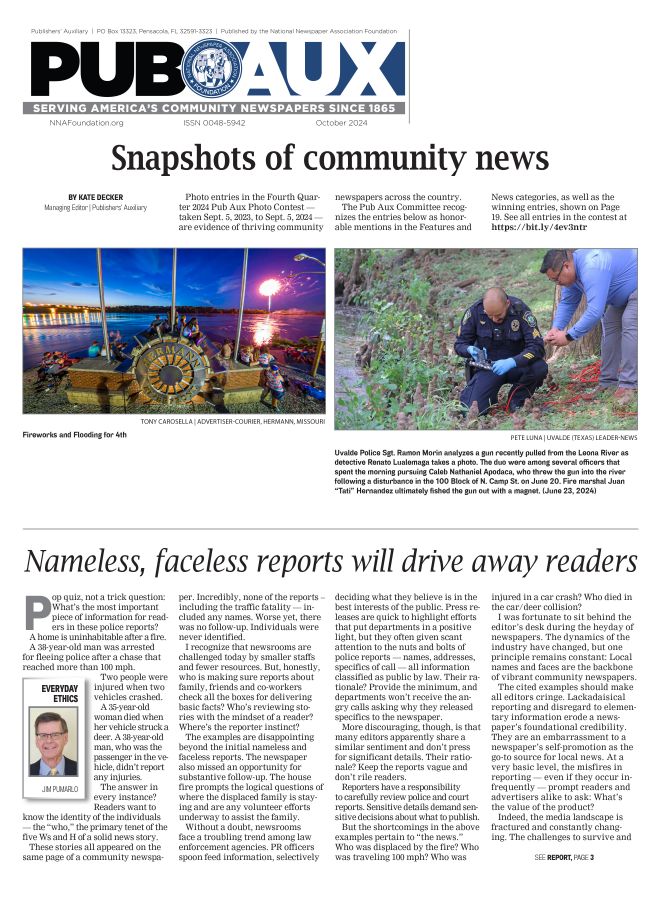Beyond left vs. right, Madison's vision of religious freedom
Mar 22, 2016
By Charles C. Haynes
Inside the First Amendement
Partisans on both sides in this campaign season are invoking the issue of religious freedom — or what they call "religious freedom" — to bludgeon the other side.
That whirling sound you hear in the background of these shouting matches is James Madison spinning in his grave.
Madison, whose birthday the nation largely ignores every year on March 16, would be appalled to see the true meaning of religious freedom, the great cause of his life, lost in the din of charge and counter-charge in our increasingly ugly political arena.
On the right, many conservatives advocate restrictions on the religious freedom of American Muslims while simultaneously complaining about restrictions on the religious freedom of American Christians.
And on the left, many progressives advocate religious accommodations for Muslims and other religious minorities while simultaneously crying "bigotry" every time conservative Christians seek religious exemptions in the culture war over marriage.
If Madison were alive today, our best-educated Founder might well quote Shakespeare: "A plague on both your houses."
In Madisonian terms, religious freedom means little unless it is extended to people of all faiths and none, including the smallest minorities and least popular beliefs. And commitment to the cause of conscience means little unless government takes seriously all claims of conscience — and then works to provide accommodations whenever possible.
James Madison's expansive vision of religious freedom is instructive for us today because he, more than any other Founder, is responsible for the American arrangement in religious freedom under the First Amendment.
As a young man in Orange County, Va., in 1774, Madison was outraged by the imprisonment of Baptist preachers for the crime of "publishing their religious Sentiments." He wrote to his friend William Bradford describing the jailing of Baptists as "that diabolical Hell conceived principle of persecution" and asked him to "pray for Liberty and Conscience to revive among us."
Then in 1776, a 25-year old Madison went to Williamsburg to represent his county at the convention called to declare Virginia's independence from Great Britain. At a key moment in the proceedings, young Madison successfully called for an amendment to the venerable George Mason's draft of the Virginia Declaration of Rights, changing "toleration in the exercise of religion" to "free exercise of religion."
With that small change in language, Virginia moved from toleration to full religious freedom — a precedent that would help shape the new nation's commitment to free exercise of religion under the First Amendment. No longer would government have the power to decide which groups to "tolerate" and what conditions to place on the practice of their religion.
Ten years later in 1786, Madison led the successful battle to disestablish the Anglican Church in Virginia by enacting the Act for Establishing Religious Freedom drafted by Thomas Jefferson. Thanks to Madison's leadership — and the support of Baptists and other dissenting groups — the Virginia General Assembly became the first legislative body in history to disestablish religion.
"The Religion then of every man," Madison wrote during that fight, "must be left to the conviction and conscience of every man to exercise it as these may dictate."
When the matter of enumerating rights was debated at the Constitutional Convention in 1787, Madison — who provided the template for the "checks and balances" in the Constitution — was at first unconcerned about the absence of a bill of rights. To list some rights, he believed, might leave others unprotected and imply that the federal government had power to determine which rights to guarantee.
Thomas Jefferson — and popular opinion in his home state — persuaded Madison otherwise. "A bill of rights," Jefferson wrote to his close friend, "is what the people are entitled to against every government on earth ... and what no just government should refuse."
As a result, Madison drafted in 1789 what was to become the First Amendment to the U.S. Constitution. Based on that draft, Congress adopted and the states subsequently ratified two principles — "no establishment" and "free exercise" — that protect one freedom: Religious freedom or liberty of conscience as an inalienable right for every person.
Despite past flaws and current conflicts, Madison's arrangement in religious freedom remains the world's boldest and most successful experiment in freedom of religion. But experiments, however noble, can fail if not carefully sustained.
For his part, James Madison was convinced that it would endure. After enacting the Virginia Act for Establishing Religious Freedom, Madison wrote to Jefferson in Paris:
"I flatter myself that with this statute we have in this country extinguished forever the ambitious hope of making laws for the human mind."
Sadly, in this rare instance, Madison was wrong — as Native Americans, Catholics, Jews, Mormons, Jehovah's Witnesses and now Muslims can attest. But if we re-commit to live up to the religious liberty principles of the First Amendment, we may yet prove him right.
Charles C. Haynes is vice president of the Newseum Institute and founding director of the Religious Freedom Center. E-mail: chaynes@newseum.orgWeb: www.religiousfreedomcenter.org Twitter: @hayneschaynes.







